New artists awarded – Welcome to Re-FREAM!
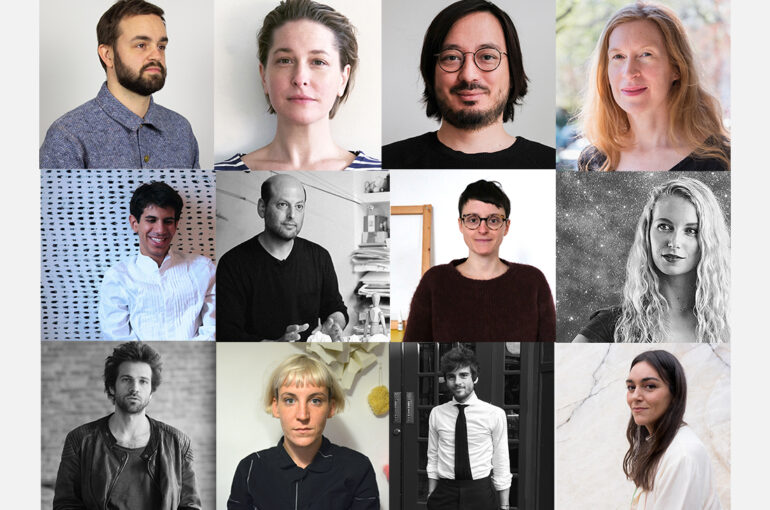
At this years Ars Electronica, our 10 awarded artists of the first round of Re-FREAM and their co-creation teams gave you insights in their 9 months co-creation experiences and presented their outcomes in an online exhibition, in which they also explained the potential of their projects to contribute to a more responsible future of fashion. This event also marked the end of their research within Re-FREAM and we are really proud of the achievements that have been made in collaboration with our art/tech teams.
Now it’s time to start another journey. For the second time, our international jury selected 10 artists and designers to team up with our community of scientists to rethink the manufacturing process of the fashion industry. In our second open call, we were looking for innovative concepts for the future of fashion. More than 130 applications were submitted at the official STARTS platform aiming to receive 55.000 Euros of funding to co-create with scientists in one of three different European scientific hubs (Berlin, Linz, Valencia). Each hub is dedicated to one area of research: additive manufacturing, smart textiles and sustainable finishing.
On November 10, the final decision was made by an international jury of designers, researchers, creators and founders. Jury member Tapani Jokinen, an internationally recognized Strategic & Ecodesign expert, commented after the final decision:
“Design is a team sport. Re-FREAM reveals opportunities for cross-functional collaboration and co-creation. The program brings together a diverse mix of most talented people from Science, Art, and Technology, sharing their viewpoints and getting them to work together – that’s when magic & great stuff happens. The program facilitates a natural environment for collaboration and unlocking creativity in order to develop best class innovation and designs to make tomorrow fashion sustainable and more purposeful. I would like to warmly welcome awarded artists to the Re-FREAM program and I am excited and curious to see the final designs where this program will lead them.”
Re-FREAM is proud to present you these ten co-creators and their concepts:
From analog to connected (Hub Berlin)
Anke Loh
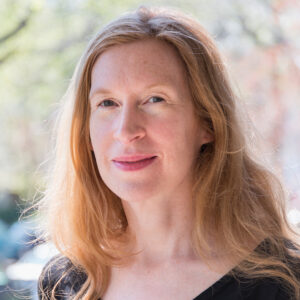
Anke Loh develops innovative upgrades to smart textiles by integrating the next generation of sensory embroidered technology to empower people in their personal space. The goal is to reconnect individuals to the physical world through tactile craftsmanship with embedded technology (e.g. for fighting stress, anxiety etc.). Her research is not only focussing on the sensory textiles of apparel, but also its applications in chairs, cushions, mattresses, walls etc.
Anke Loh has a background in fashion design and has forged multiple collaborations with technology-focused individuals, research teams, companies and universities. Loh broke new ground by integrating Philips Lumalive panels into dresses and skirts featuring video imagery on soft embedded LED screens.
She studied fashion at the Royal Academy of Fine Arts in Antwerp, earning an MFA in 1999, after which she launched her former fashion design company, Rosso NV. Her collections have been featured in over two dozen international runway shows and exhibitions, including New York Fashion Week, The Centre Pompidou in Paris and Japan’s Osaka Collection Show.
Jan Wertel
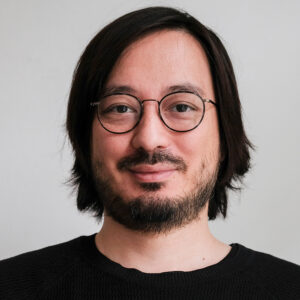
Jan Wertel’s idea is to create a fashion item that confuses the Artificial Intelligence integrated in nowadays CCTV’S in an active way, thus making the wearer virtually invisible.
Wertel studied product design at the State Academy of Arts in Stuttgart and after living in London and Munich has settled in Berlin. He is a partner at WertelOberfell, a product design studio based in Berlin and Munich, which was founded in 2008 together with Gernot Oberfell. Their work ranges from experimental one-off pieces to furniture and interior products all the way to mass produced consumer products and electronics.
These seemingly very different design topics are all connected by a strong sense of balancing real-world necessities with a playful approach of mixing and cross referencing different areas of design, material and technology.
Malou Beemer
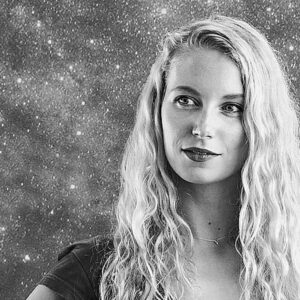
Malou Beemer reshapes the relation between us and our clothes by integrating body language and non-verbal behaviour into the design process, making fashion design more interactive and responsive.
Malou is a Dutch designer and researcher. She focuses on working with the body and personal space around it. She is fascinated by human behaviour, psychology, movement and the way this translates to nonverbal communication. She graduated (2013) as Master of Arts in Fashion Communication Design.
From 2D to 3D (Hub Linz)
Silke Hofmann
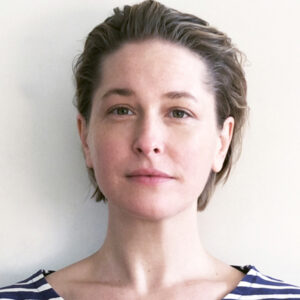
Silke Hofmann is rethinking the conventional post-mastectomy bra on a structural level to co-create a wearer centric, modular and customizable bra alternativ supporting women’s individual needs after breast cancer.
Hofmann is a clothing design researcher and fashion designer with a well-rounded background in the international prêt-à-porter fashion industry. She holds a BA from the Fashion Institute of Technology, an MA from Central Saint Martins and is currently completing a PhD in the School of Design at the Royal College of Art.
In her design practice, she is interested in the wearer-garment relationship and in conceptualising garment development processes that advocate consumer participation and co-creation. She believes collaborative clothing developments produce more inclusive and need-specific designs that bare the potential to fill neglected gaps in underserved individuals clothing needs. Her design research is situated in the female health spectrum and focuses on aesthetic and ergonomic bra needs of females affected by breast cancer after mastectomy.
https://www.instagram.com/silk_hofmann/
Filippo Nassetti & Vincenzo Reale
In their collaboration, Filippo Nassetti & Vincenzo Reale are changing the notion of prostheses, from medical devices to customised fashion products by radically rethinking the relationship between technology in the form of wearable objects and the human body.
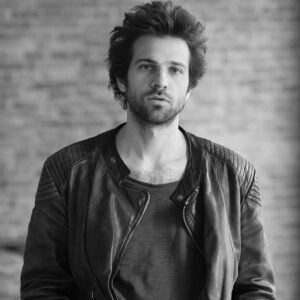
Filippo Nassetti is an architect and generative designer. His design agenda was initiated in 2012 by co-founding MHOX, a EU-funded research practice and start-up focused on the design of radical artefacts and wearable products through computational techniques and 3d printing.
In 2015 Filippo joined Zaha Hadid Architects, initially as part of the Computation and Design team, then of Zaha Hadid Design. His focus there is on small scale research projects, from product design to experimental sculptures and installations.
Since 2016 he teaches at UCL The Bartlett School of Architecture, as part of the B-Pro Master’s Degree program, Urban Morphogenesis Lab. Filippo’s independent work has been published and exhibited internationally. He lectured at The Royal College of Arts (London), China Central Academy of Fine Arts (Beijing), Florida International University (Miami) among others and exhibited at Centre Pompidou (Paris), Design Museum (London), Bozar Centre (Bruxelles).
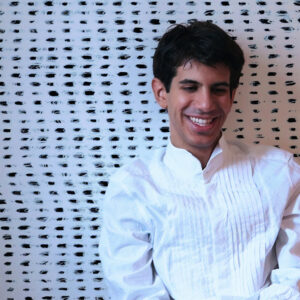
Vincenzo Reale is a chartered structural engineer (ICE) and architect (ARB). He holds a master’s degree with distinction in Structural Engineering and Architecture from the University of Bologna and a Master of Science from the Architectural Association in London.
During the last ten years he has worked with several contemporary architectural and design practices, including Zaha Hadid Architects, Antony Gormley Studio, and Tom Wiscombe Emergent Architecture. He currently holds the position of senior structural engineer in the Specialist Technology + Research group in Arup in London.
Concurrently with his professional work he has also held several academic positions, teaching at the Architectural Association, Imperial College, Bartlett School of Architecture and Arup University. His works and collaborations have been exhibited worldwide, notably at the Venice Biennale of Architecture, Royal Academy of Arts and Design Museum in London.
https://www.instagram.com/vincenzoreale
Assa Ashuach
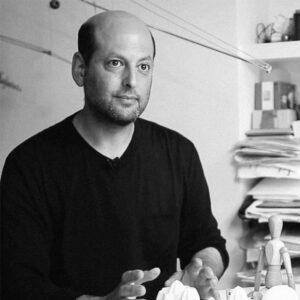
Assa Ashuach works and researches in the integration of additive manufacturing technology on basis of 3 components to follow a completely new approach in shoe design and production.
Ashuach is a product designer and industrial researcher, who worked with large multinational design firms such as Nike, Samsung, Panasonic, Amazon, Target and the UK Home retail group of companies among others, He has developed a product design approach that incorporates user inputs into a “safe” 3D personalisation experience.
In the mid 2000’s he patented, trademarked and was later awarded UK government funding to develop the Digital Forming® ltd technology. The vision of embedded “open 3D products” featuring the technology was shown in a collection of 3D shape modifiable products at London’s Science Museum’s future of manufacturing series of exhibitions in 2009.
Throughout the years, his works were exhibited in different galleries and museums around the world and he was regularly present with his research and practice within both the professional and academic communities internationally, at public talks, keynotes, workshops and seminars at leading international conferences, universities, museums and other public forums.
Together with an esteemed group of international designers, architects and researchers Assa Ashuach was invited to write a new book chapter for the book ‘Mass Customization and Design Democratization’ The book chapter’s name is ‘Learning as it grows: the humanisation of objects’ and was published January 2019 by leading the publisher Routledge.
Sophia Guggenberger & Eugenia Morpurgo
In their collaboration, Sophia Guggenberger & Eugenia Morpurgo are working on sustainable shoes made from materials that are harvested in a regenerative field, including digital technologies in the fabrication process of the shoes.
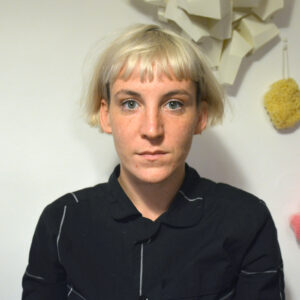
Sophia Guggenberger is a designer/maker continuously working on developing alternative strategies for the production of footwear. She is researching not only the technical aspects of these specific processes but also the wider implications of employing different production methods; mixing craft, industrial strategies as well as digital fabrication.
Next to a qualification in Fashion Design and Technology, she holds a MA in Design from the University of the Arts Berlin and a BA in Footwear Design and Development from London College of Fashion. She has worked as designer within an industrial context for the Spanish footwear company Camper, since 2015 she works as independent designer, having received a number of grants and fellowships, among others from the Akademie Schloss Solitude in Stuttgart and the Goethe Institute.
From 2015 to 2018 Eugenia and Sophia collaborated on the research project AnOtherShoe – A new model for shoe production based on shared knowledge and local manufacturing, through small scale and on demand digital fabrication.
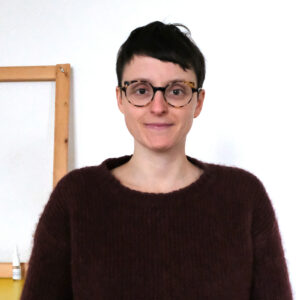
Eugenia Morpurgo is an independent Italian designer researching the impact that production processes have on society, with a focus on investigating and prototyping alternative scenarios and products. She works through self initiated projects and commissioned work from cultural institutions, Universities and Fablabs.
Since September 2014 she has been a lecturer at the Free University of Bozen in Bolzano, Italy, ENSAD in Paris and NABA in Milan. She holds a MA in Social Design at the Design Academy Eindhoven and a BA in Industrial Design at IUAV Istituto Universitario Architettura Venezia. Parallel to her studies, she took part in the research program on craft and local materials Atelier Rwanda, based in Kigali, Rwanda.
Eugenia has received research fellowships from the American Academy in Rome and the Akademie Schloss Solitude in Stuttgart.
From linear to sustainable circular systems (Hub Valencia)
Alexander Bello
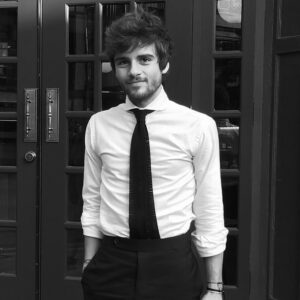
Alexander Bello works on a capsule collection of multisensorial tailored-inspired garments where nature, science and the well-being of the wearer would be woven together.
Bello’s work seeks to explore the intersection of nature, science, craftsmanship and health through bespoke tailoring. Having worked under various tailors and pattern cutters in London, New York and Madrid, he continuously aims to preserve traditional hand crafted techniques while incorporating innovative processes to create garments with a story and a soul.
With a particular interest in natural dyeing practices, one of his main investigations consists in integrating nature into the garments he makes and finding sustainable solutions for today’s fashion system. How can we re-think current production processes to create a link between the craftsman and the wearer, all while implementing innovative and sustainable visions for the future?
Loreto Binvignat Streeter
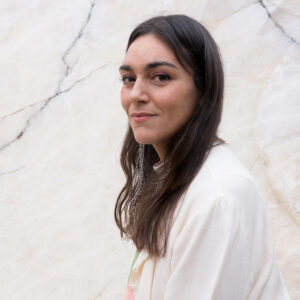
Loreto Binvignat Streeter experiments in using microorganisms in the dying process in combination with innovative technologies, thus creating avant-garde garments at the crossroads of design and technology.
Loreto is an international artist, designer and author. She has worked in the academic field, working for 10 years at IED Barcelona, within the fashion department affiliated to Westminster University London. She also worked for five years as a professor in design and fashion at the London College for design and fashion Hanoi. Her background is in fashion design and art. For the last 10 years she has been developing her multidisciplinary ethical and sustainable practice. This practice intersects in her brand: anima. by loreto.
Understanding the textile dye industries huge pollution problem she began to experiment with sustainable dyes. This research led her to create bonds, collaborate with and learn from ethnic communities around the globe, in particular the Hmong community in the mountains of Sapa Vietnam. After all these years of working with traditional dyeing techniques it was only natural to go a step further and take the leap into innovative, sustainable dyes.
Throughout the last year she has been working with the Vienna Textile Lab, researching and experimenting with bacteria dyes. Through this partnership they became one of the Worth Partnership Project 3rd call winners. This incredible experience positioned her at the intersection of art, science and technology.
Tim Van Der Loo
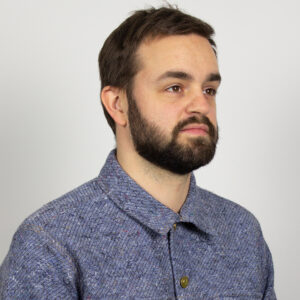
Tim Van Der Loo builds on an existing fabric created as part of the circular garment project New Blue, further developing the material with treatments and finishes using different cutting edge technologies in the dying and finishing process.
He is a material and product designer – based in Berlin, born in the Netherlands – using post consumer resources to develop new surfaces and structures. Even though his main concern is sustainability, he cares about bringing a contemporary aesthetic to recycled materials. His works are reflections of a playful approach to the function and matter of objects for everyday use. The methodology used in his practice is to work with waste as a resource.
Tim van der Loo takes two perspectives; working with craft, enabling independency with DIY tools, machines and techniques and working with the industry, meaning to collaborate, translate and to develop user items for bigger scale. Working within industry is set out not to design something new but to redesign the material that was wasted before and keep it out of being wasted.





